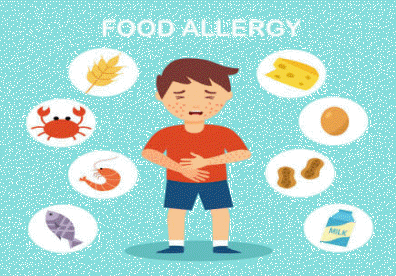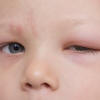Food Allergies

Rising Prevalence of Food Allergies in Children
Food allergies are an increasing concern, particularly in childhood. Common food allergens include peanuts, milk, eggs, shellfish, and tree nuts. Allergies to these foods account for over 90% of food allergies in children. The prevalence of food allergies in children has risen in recent decades, with research suggesting that environmental, dietary, and genetic factors all contribute to the development of food allergies.
The symptoms of food allergies can vary from mild to severe and often
manifest within minutes to a few hours after consuming the allergenic
food. For some children, allergic reactions may involve the skin, such
as eczema, hives, or swelling of the lips and face, while others may
experience gastrointestinal distress or respiratory symptoms. In
different cases, food allergies can contribute to anaphylaxis, which is
a life-threatening condition that requires immediate medical attention.
| Food Allergen | Symptoms |
| Peanuts | Eczema, hives, swelling of lips/face, gastrointestinal distress, anaphylaxis |
| Milk | Eczema, hives, respiratory issues, gastrointestinal distress, anaphylaxis |
| Eggs | Skin reactions, gastrointestinal distress, anaphylaxis |
| Shellfish | Skin reactions, respiratory symptoms, anaphylaxis |
| Tree Nuts | Skin reactions, gastrointestinal issues, anaphylaxis |
Challenges in Diagnosis and Psychological Impact
Diagnosing food allergies can be challenging, especially in young children who may not be able to communicate their symptoms. Additionally, food allergies often overlap with other conditions, such as lactose intolerance or gastrointestinal disorders, making accurate diagnosis difficult. Healthcare providers typically use a combination of medical history, skin tests, and blood tests to diagnose food allergies, and in some cases, oral food challenges may be necessary to confirm an allergy.
Food allergies can have significant psychosocial impacts on both children and their families. Children with life-threatening food allergies may experience anxiety and fear of accidental exposure to allergens, which can limit their social interactions and overall quality of life. For parents, the constant vigilance required to manage their child’s food allergies, whether at home, at school, or during social gatherings, can lead to stress, anxiety, and isolation.
Management and Support for Families
Healthcare providers must take a comprehensive approach when addressing the needs of families living with food allergies. This means recognizing the emotional and psychological distress that food allergies may bring to the families and offering guidance on how to cope with these challenges. Interventions that focus not only on the biomedical aspects of food allergy management but also on the psychosocial well-being of families have been shown to improve the overall quality of life for both children and their parents.
There is currently no cure for food allergies, and the primary method of managing food allergies is to avoid the known allergens. In cases of accidental exposure, children with food allergies must have access to epinephrine injections, which can reverse the symptoms of anaphylaxis and save lives. Additionally, healthcare providers should provide education and support to families on how to manage food allergies, including how to read food labels, recognize early signs of allergic reactions, and navigate social situations safely.


